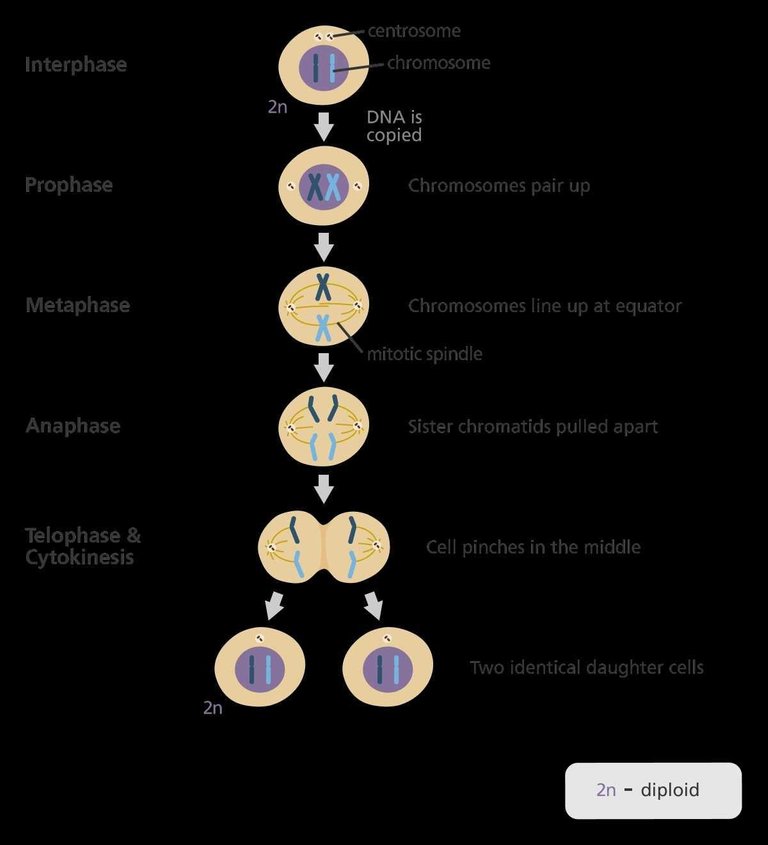Well all living thing experience growth it's a common phenomenon a continuous process.
Growth this is an increament or expansion in maturation size physical quantities or strenght. It is also the division of cells. We all come to know the changes that occur when a child is born to when he/she starts working. Growth occurs due to the division or splitting of cells this process is known as CELL DIVISION.
GROWTH AND CELL DIVISION.
Cell division is divided into two they are nown to be, mitosis and meiosis.
- Mitosis:
occurs in asexual reproduction. It is a cell or nuclear division following the duplication of the chromosomes wereby each daughter cellor nucleus has exactly the same chromosome content as the parent.
This is a two successive cell division with only one duplication of chromosome production of four daughter cell. It's a division of sex cells.
CELL DIVISION.
When eukaryotic organism reproduce , the genetic material must be duplicated and separated. How mitosis works, Mitosis include four stages.the
MITOTIC DIVISION.
1.Prophase.
2.Metaphase.
3.Anaphase.
4.Telophase .
I. Prophase stage:
a. Dissolution of nuclear membrane.
b. Chromatin materials become condensed and can be seen as been made up of chromosomes.
c.chromosomes appear as homologous pair.
II. Metaphase:
a. Formation of spindle fibre.
b. Chromosomes align at the equator also aka metaphase plate.
c. The spindle engages the chromosomes at the centromere.
III. Anaphase:
a. Spindle fibers shotens.
b. The shortening pulls the sister chromatids apart.
c. Chromatids begins there migration towards the poles.
IV. Telophase:
a. Chromatids complete there migration to the poles.
b. Spindle fibre dissolves.
c. Nucleus appears.

MEIOTIC DIVISION.
Meiosis is a two successive cell division with only one duplication of chromosome leading to the production of four daughter cells, The process are as followed.
a. Prophase 1:
nuclear membrane disappear and chromosome becomes visible as thin threads known as CEPTONEMA, thereafter homologous chromosomes pair up at a stage known as ZYGONEMA and the pairing up is completed known as PACHYNEMA. After PACHYNEMA the tiny thread of the chromosomes have become thicken and chromosomal material are exchanged between homologous chromosomes this is referred to as crossing over. Paired homologous chromosomes begins to separate at DIPLOMENA but still joined at point known as CHIASMATA indicating exchange of chromatids segment between homologous and these marks the end of prophase 1.
b. Metaphase 1:
paired homologous are aligned at metaphase plate while the centromere of each membrane of the homologous engages the spindle.
c. Anaphase 1:
paired homologous begins migration to the opposite poles caused by the spindle fibre shortening.
d. Telophase 1:
Sister chromatids finish migration. Chromatids materials dissolves and necleus appears. This process is known as CYTOKINESIS.
MEIOTIC STAGE II.
basically everything that happend in mitosis is the same as meiosis 2.
N:B the difference between mitosis and meiosis is meiosis1 . Because cells contains a tetracell in each and well divide or separate in meiosis2. 
Hope you love my post thanks for reading.